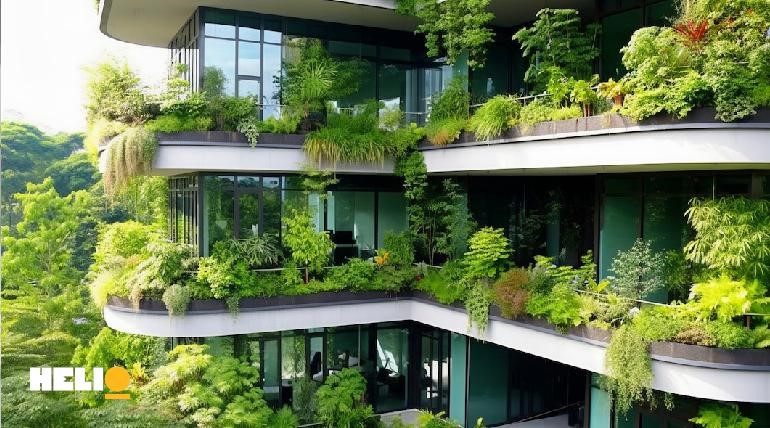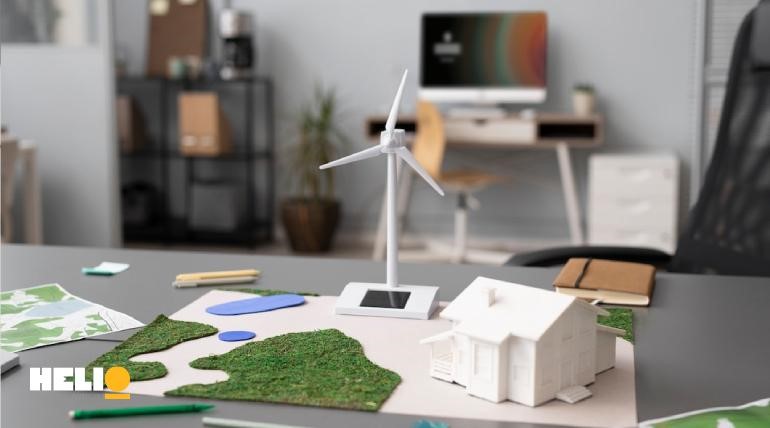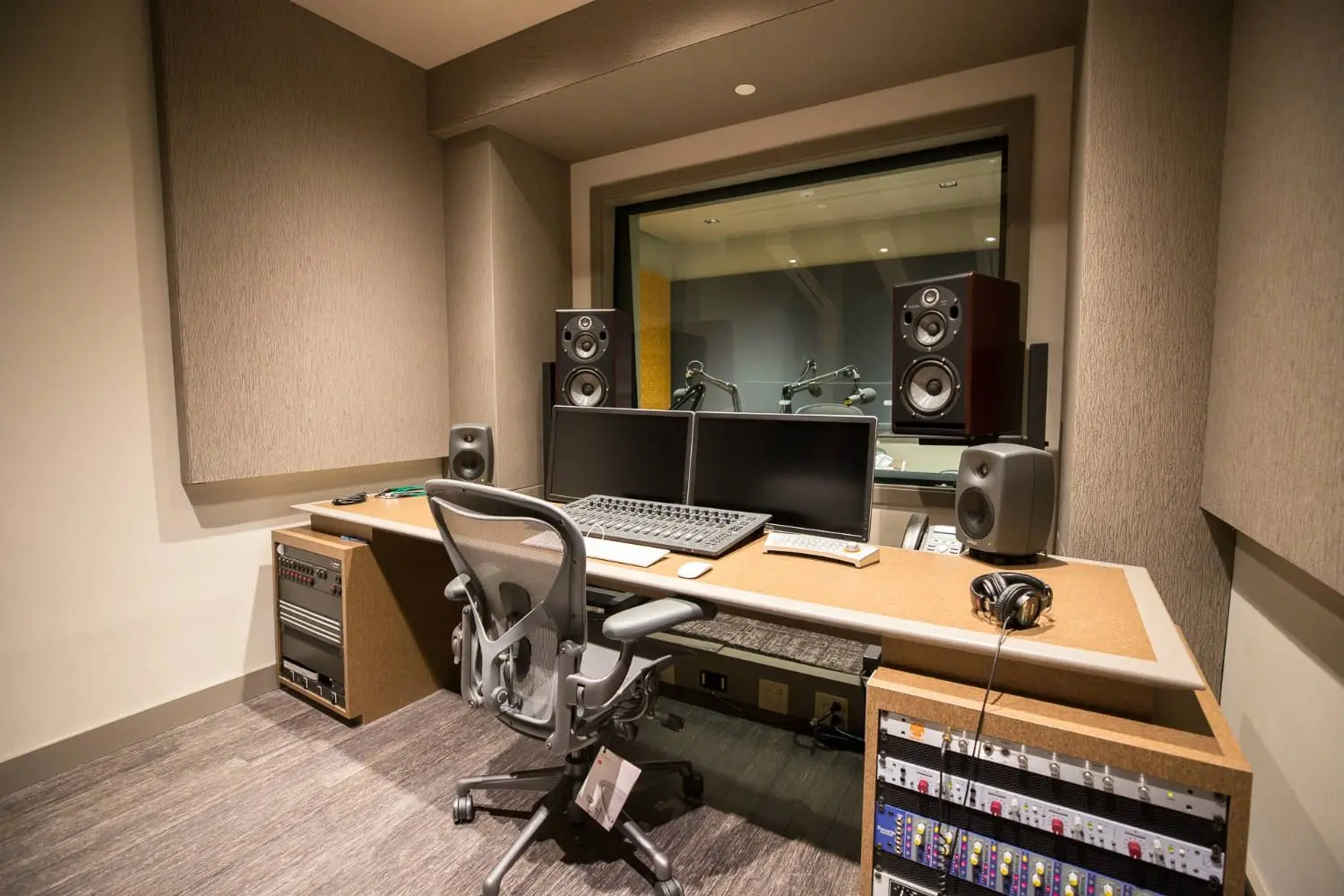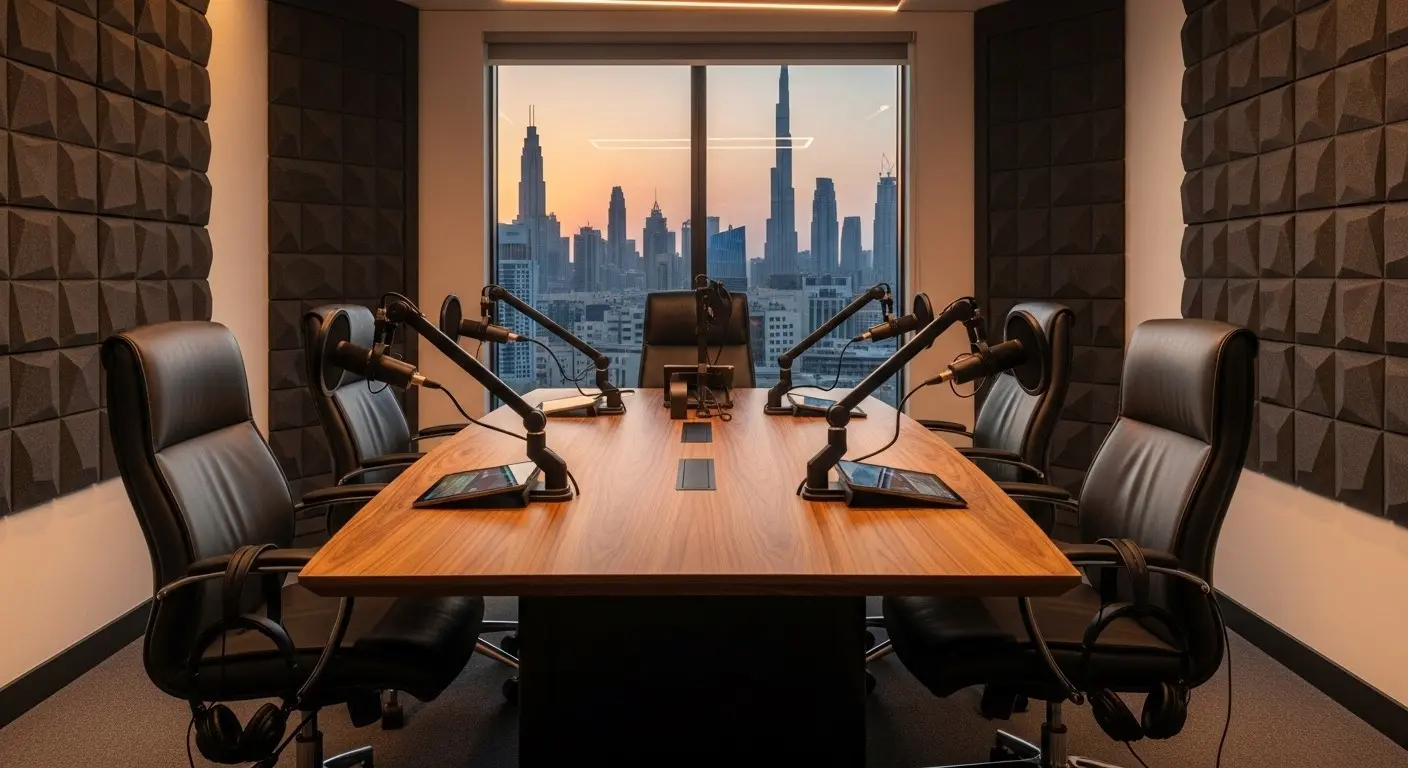In an era where the clarion call for environmental conservation rings louder every day, sustainable architecture has emerged as not just a trend but a necessity. Helio Archi takes you on an explorative journey through sustainable architecture, decoding its significance and showcasing how it stands as a beacon of hope in combating climate change. This comprehensive guide is tailored for eco-conscious consumers, architecture enthusiasts, and sustainable design advocates aiming to deepen their understanding and spur action within this pivotal movement.
Introduction to Sustainable Architecture
Sustainable architecture goes beyond mere construction; it’s a holistic approach that seeks harmony between architectural design and the natural world. It embodies principles that significantly reduce environmental impacts while creating healthier, more livable spaces for individuals. This practice is not just an option but a strategic necessity in our collective endeavor to ensure a healthier planet.
Sustainable Architecture Characteristics: What Is Sustainable Architecture?
At the heart of sustainable architecture lie core principles that guide its practice. Energy efficiency, use of renewable and recycled materials, improvement of indoor air quality, and a profound respect for natural surroundings define this thoughtful approach. These principles are not mere guidelines but strategies that, when implemented, can lead to groundbreaking innovations in how we conceive and construct our living spaces.
- Energy Efficiency: It is paramount to design buildings to minimize energy consumption. This involves passive strategies like optimal building orientation for natural lighting and heating/cooling, high-performance insulation, and efficient ventilation systems. Active measures, like solar panels and geothermal heat pumps, further reduce reliance on the grid.
- Renewable and Recycled Materials: It is crucial to prioritize materials with low environmental impact. Renewable resources like sustainably harvested wood and bamboo are preferred. Recycled materials like steel, concrete, and even repurposed shipping containers offer creative reuse solutions. Local sourcing reduces transportation emissions as an added benefit.
- Water Conservation: Sustainable buildings incorporate strategies like rainwater harvesting, greywater recycling systems, and low-flow fixtures to minimize water use. Landscaping with drought-tolerant native plants further reduces the demand for irrigation.
- Indoor Environmental Quality (IEQ): Attention to IEQ ensures a healthy and comfortable indoor environment. Abundant natural light, proper ventilation to filter out pollutants, and the use of low-VOC (volatile organic compound) emitting materials improve air quality, contributing significantly to occupant well-being.
- Site Optimization: Sustainable architecture starts with careful site selection, minimizing disruption to existing ecosystems. Designs consider existing topography, prevailing winds, and solar access to maximize the building’s integration with its surroundings.
Holistic and Lifecycle Approach: Sustainability isn’t just about the immediate construction; it’s a long-term commitment. Designs should be flexible for future adaptation, and the eventual deconstruction and material reuse should be planned from the outset.

Why Is Sustainable Architecture Important in Today’s World?
Why is sustainable architecture important? The answer lies in its myriad benefits, ranging from environmental to economic and social advantages. By significantly reducing our carbon footprint and promoting resource conservation, sustainable architecture is critical in addressing some of the most pressing global challenges, including climate change and resource depletion. Additionally, it offers economic advantages like long-term cost savings and heightened property values, while providing healthier, more equitable spaces for communities.
- Climate Change Mitigation: The building and construction industry is a major contributor to greenhouse gas emissions. Sustainable architecture, focusing on energy efficiency, renewable energy sources, and low-carbon materials, helps tackle climate change at its core. We actively work towards a cleaner, more sustainable future by reducing our reliance on fossil fuels.
- Resource Conservation and Waste Reduction: Sustainable design emphasizes the use of recycled, renewable, and locally sourced materials whenever possible. This reduces pressure on finite resources and minimizes waste generation. Sustainable buildings may even incorporate systems to harvest rainwater or treat wastewater, decreasing their environmental strain.
- Economic Benefits: Although sometimes associated with higher initial investment, sustainable buildings yield significant long-term savings. Reduced energy and water bills, lower maintenance costs, and increased property value make these structures financially advantageous throughout their lifespan.
- Health and Well-being: Sustainable architecture prioritizes healthy indoor environments. Improved air quality, ample natural lighting, and non-toxic materials positively impact occupants’ physical and mental health. Biophilic design, which incorporates natural elements, has been shown to reduce stress, improve cognitive function, and create a sense of well-being for those within the building.
- Social Equity: Sustainable architecture can promote a more just and equitable society. Green building practices often stimulate local economies and create clean energy jobs. Additionally, sustainable housing initiatives can address affordability issues and access to healthy living spaces.
Case Studies of Successful Sustainable Architecture Examples
Inspirational examples abound, illustrating the successful application of sustainable architecture principles. From The Edge in Amsterdam, which epitomizes intelligent, energy-efficient design, to The Bullitt Center in Seattle, lauded as one of the greenest commercial buildings in the world, these case studies serve as tangible proof of sustainable architecture’s viability and impact.
How to Implement Sustainable Architecture Design in New and Existing Structures
The transition to sustainable design requires a multifaceted approach, encompassing everything from incorporating passive design strategies that enhance climate responsiveness to selecting materials that minimize environmental impact. For new projects, this means embedding sustainability into every design and construction phase. Existing structures, meanwhile, can be retrofitted with sustainable technologies and practices to improve efficiency and reduce ecological footprints significantly.
The Future of Sustainable Architecture
Looking ahead, sustainable architecture promises to transform our built environment into one that is more resilient, efficient, and in harmony with nature. Advances in technology and innovative design practices continuously expand what’s possible, offering new pathways for sustainable development that were unimaginable just a few decades ago.
- Biomimicry: Architects are increasingly looking to nature for inspiration. Studying the forms, structures, and processes found in the natural world can help them create extraordinarily efficient and adaptive buildings. For example, buildings might mimic how termite mounds regulate temperature or how a lotus leaf repels water to achieve climate control and self-cleaning properties.
- Modular and Prefabricated Construction: Off-site construction techniques are gaining popularity as they reduce waste, streamline building, and improve efficiency. Buildings made from modular units manufactured in a controlled environment, promise quicker construction times, higher quality control, and a significantly reduced ecological footprint.
- Smart Building Technologies: Embedded sensors, Internet of Things (IoT) connectivity, and artificial intelligence will make buildings more responsive to occupants and the environment. Imagine a building that automatically adjusts lighting and temperature based on usage patterns and weather conditions, optimizing energy consumption in real time.
- Regenerative Design: Sustainable architecture will move beyond simply minimizing harm and strive to have a restorative environmental impact. Regenerative buildings not only meet their own needs for energy and water but produce surpluses that can be shared with the surrounding community.
Sustainable Architecture Challenges and Opportunities and The Vision
The future of sustainable architecture is a built environment that is a seamless extension of the natural world. Buildings will function more like living organisms, generating their energy, harvesting rainwater, managing waste sustainably, and even contributing to restoring local ecosystems. Our cities will become more livable, with green roofs, rooftop gardens, and permeable surfaces to mitigate urban heat island effects and reduce stormwater runoff.
Transitioning to widespread sustainable practices does face obstacles like higher upfront costs and a need to update building codes that favor traditional methods. However, the long-term economic and environmental benefits are undeniable. Increased awareness, policy support, and the decreasing costs of eco-friendly technologies will propel change.
Conclusion
Sustainable architecture represents a critical juncture in our relationship with the environment. It encapsulates a comprehensive, strategic approach to building that aligns with Helio Archi’s commitment to excellence and growth within architectural practices. We stand at a pivotal moment where the decisions we make today will shape the legacy we leave for future generations.
We invite architects, designers, policymakers, and stakeholders to join Helio Archi in this vital movement. Together, we can forge a future where sustainable architecture is not just a niche specialty but the foundational principle guiding all our construction and design efforts.





